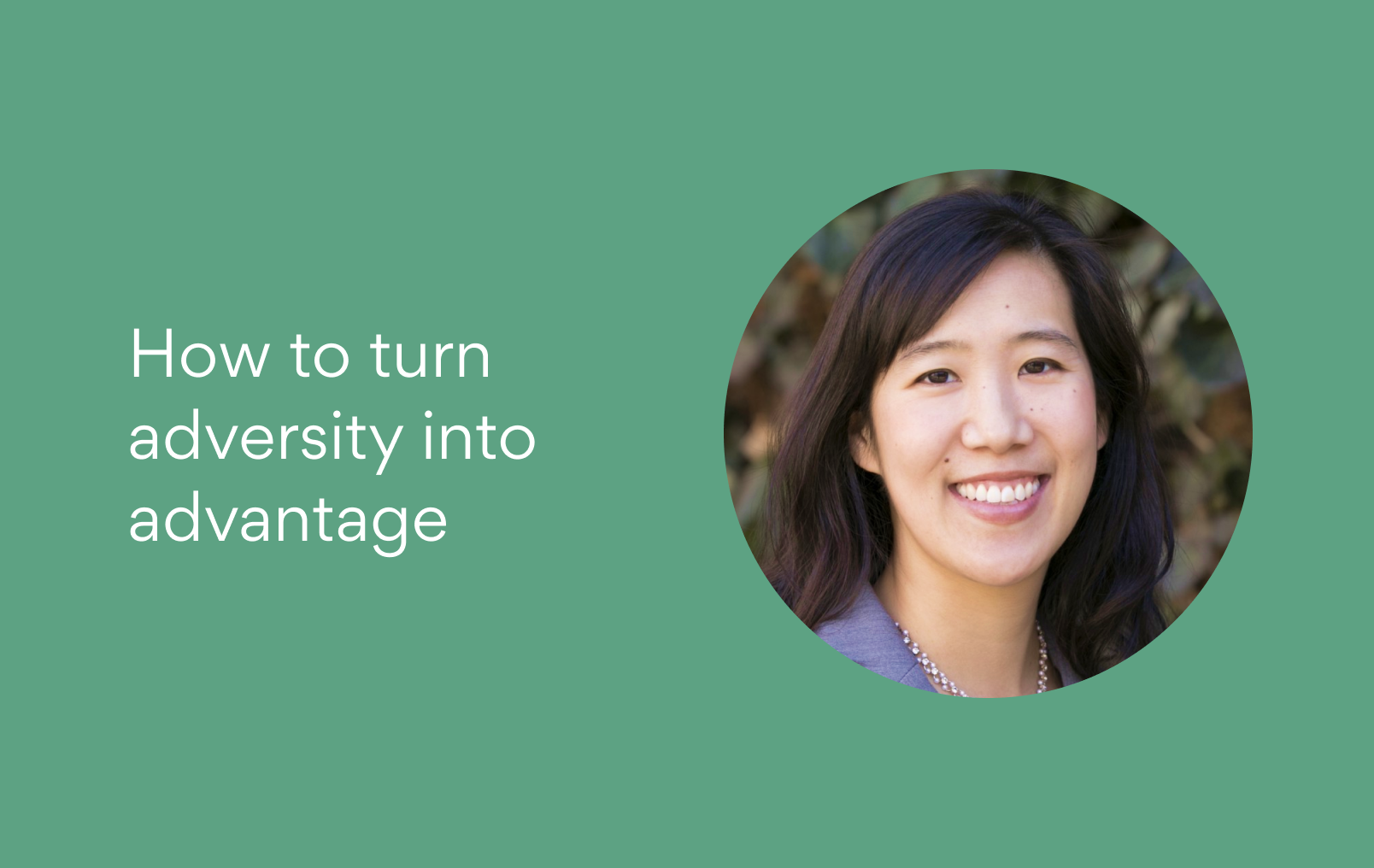How to turn adversity into advantage: Tips from an award-winning Harvard professor

The past year has been a year of adversity. From the pandemic to racial injustice, many people have been faced with multiple types of adversity. And while there are societal changes that need to happen to overcome these challenges, there’s a lot we can do as individuals to fight adversity within an imperfect system.
We recently had the privilege of learning from Laura Huang, who joined us for a virtual talk at Asana focused on how to turn adversity into advantage. Laura is an award-winning Harvard Business School professor whose research focuses on interpersonal relationships and implicit bias in entrepreneurship and in the workplace.
Here are some of the key insights that Laura shared with us.
Finding your edge
Some people seem to have an edge—a characteristic that attracts attention and helps them overcome adversity. Laura shared with us her framework for creating our own edge, as detailed in her book, Egde:
- “E” stands for enrich. To gain an edge, we need to understand the unique value we provide others—and, especially, how we can best enrich others.
- “D” stands for delight. Gaining an edge involves looking for ways to delight key decision-makers and influencers.
- “G” stands for guide. To gain an edge, we need to guide perceptions of the value we bring to others and, especially, reframe negative perceptions.
- “E” stands for effort. Gaining an edge entails the hard work that is required to demonstrate our value to others.
In addition to sharing her EDGE framework with us, Laura also shared five key tips for finding our edge and overcoming adversity.
1. Grow where you are planted
Hard work is put on a pedestal in our society. And while hard work is crucial to success, Laura reminded us that, in order to create an edge, we need to understand our traits and characteristics and use them to our advantage.
To do this, we need to “grow where we are planted.” That means leveraging our own superpowers, within our own contexts. It also means not underestimating where you’ve come from—that’s what makes you unique and forms the core of your superpowers.
Of course, we can grow to new soils eventually, but we should never lose sight of what’s at the core of who we are.
2. Success = the value we add + the value others perceive
Laura explained to us that success is more than the value we add to a given situation. It also involves the value that others perceive in us. To create an edge, we need to first recognize that others will have perceptions about us, many of which will often be incorrect.
Laura reminded us that we need to assess our “basic goods,” which are our history and our story. Once we understand our basic goods, we need to effectively shape others’ perceptions—not only of our strengths—but also of our shortcomings. We need to confront the factors that others perceive to be our shortcomings and turn them into assets that attract positive attention.
3. Think multi-dimensionally about yourself
It’s tempting to compare our situations to the highlight reels of other people’s situations. This often leads to imposter syndrome, which has become all too common, especially in the workplace. Our recent Anatomy of Work Index found that nearly two-thirds (62%) of knowledge workers experienced imposter syndrome in 2020.
Laura cautioned against this tendency to compare our lives with one dimension of someone else’s life. She explained this using a metaphor of a diamond. Diamonds have flaws, yet you can position a diamond so that the best part of the diamond shines and the imperfections are concealed.
When comparing yourself to others, recognize that, like diamonds, humans are multi-dimensional and have different imperfections. If you compare yourself to others, look at the whole diamond, not only which parts shine brightest.
4. Be patient with failure
We’re often told that failure is a prerequisite to success. But most of us are uncomfortable with failure and try to avoid it in many situations. As Laura explained to us, this is often because failure is closely tied to embarrassment—we’re embarrassed when we fail.
Laura emphasized the importance of being patient with failure. When we feel embarrassed, we should frame it as a great opportunity to learn about ourselves, even while it’s uncomfortable. In those moments, ask yourself, what does this embarrassment tell you about yourself? What does it tell you about your beliefs? What does it tell you about your strengths? By being patient with failure and using the inevitable feelings of embarrassment as opportunities to learn, we’re more likely to find future success.
5. Leverage both advocacy and inquiry
Finally, Laura reminded us to differentiate between advocacy and inquiry, and use both as part of our toolkit for overcoming adversity. Advocacy is about convincing others to listen to us because we have something important to say. On the other hand, inquiry is about asking questions to help you understand where people are coming from.
We need to effectively share our opinions with others and advocate for ourselves, but we also need to understand others’ viewpoints and positions in order to develop messages that resonate with them. When we consider advocacy and inquiry as part of our toolkit, we’ll be more effective at overcoming adversity to achieve success.
Turning adversity into an advantage
Adversity is inevitable, although it affects some people much more than others. Laura reminds us that we all have the power to make our disadvantages work for us by turning them into advantages. It’s not always about hard work. By gaining an edge, we can ensure that adversity does not defeat us but, instead, fuels us.
To read more about how to find your edge, check out Laura’s webpage and her book.

